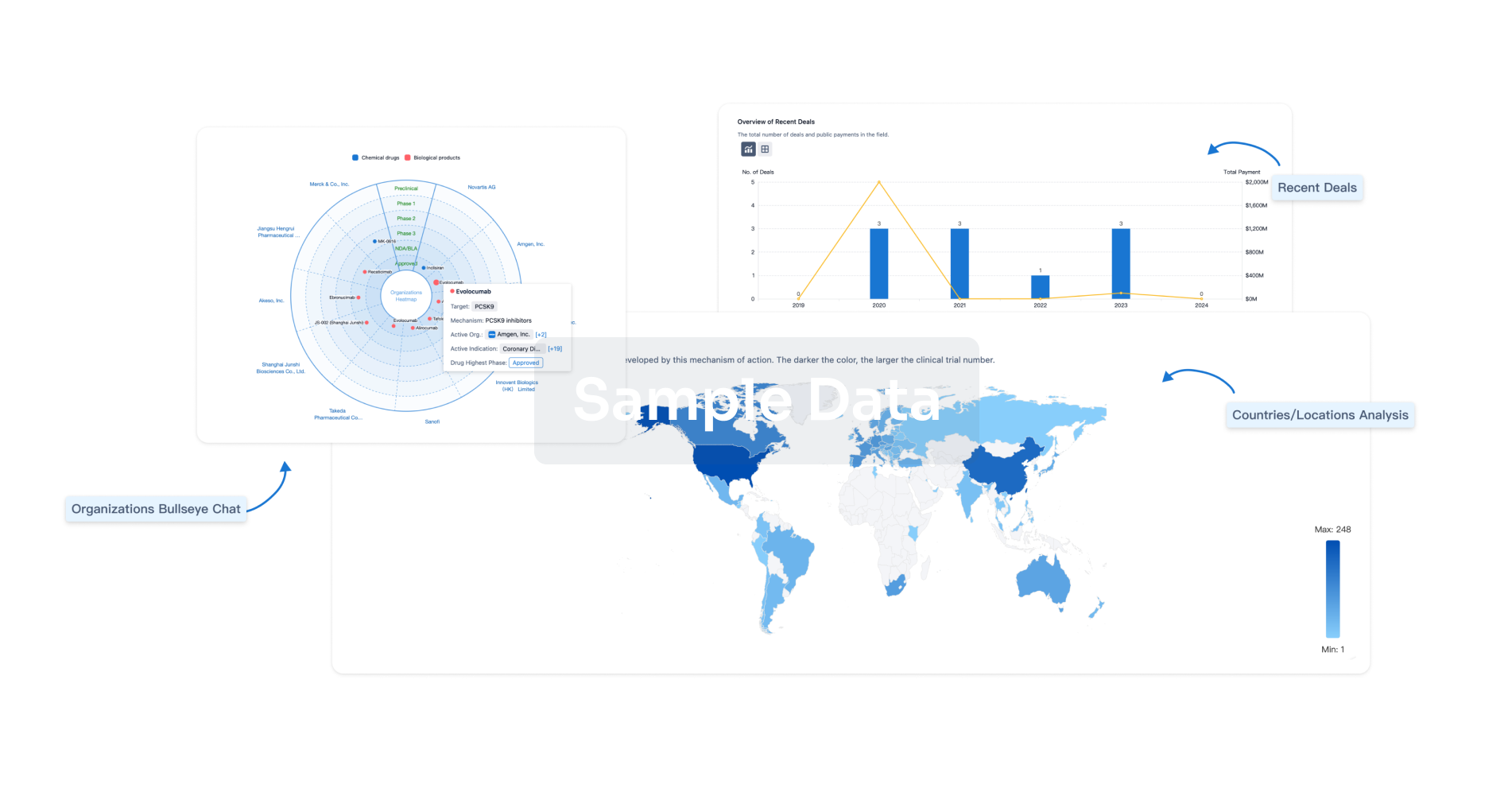Request Demo
Last update 14 Oct 2024
LRRC37A4P
Last update 14 Oct 2024
Basic Info
Related Targets |
Related
100 Clinical Results associated with LRRC37A4P
Login to view more data
100 Translational Medicine associated with LRRC37A4P
Login to view more data
0 Patents (Medical) associated with LRRC37A4P
Login to view more data
7
Literatures (Medical) associated with LRRC37A4P01 Oct 2023·Life science alliance
De novo network analysis reveals autism causal genes and developmental links to co-occurring traits
Article
Author: Jacobsen, Jessie C ; Miller, Catriona J ; Wicker, Joerg S ; O’Sullivan, Justin M ; Golovina, Evgeniia
Autism is a complex neurodevelopmental condition that manifests in various ways. Autism is often accompanied by other conditions, such as attention-deficit/hyperactivity disorder and schizophrenia, which can complicate diagnosis and management. Although research has investigated the role of specific genes in autism, their relationship with co-occurring traits is not fully understood. To address this, we conducted a two-sample Mendelian randomisation analysis and identified four genes located at the 17q21.31 locus that are putatively causal for autism in fetal cortical tissue (LINC02210,LRRC37A4P,RP11-259G18.1, andRP11-798G7.6).LINC02210was also identified as putatively causal for autism in adult cortical tissue. By integrating data from expression quantitative trait loci, genes and protein interactions, we identified that the 17q21.31 locus contributes to the intersection between autism and other neurological traits in fetal cortical tissue. We also identified a distinct cluster of co-occurring traits, including cognition and worry, linked to the genetic loci at 3p21.1. Our findings provide insights into the relationship between autism and co-occurring traits, which could be used to develop predictive models for more accurate diagnosis and better clinical management.
01 Aug 2023·Neurobiology of disease
A splicing transcriptome-wide association study identifies novel altered splicing for Alzheimer's disease susceptibility.
Article
Author: Bae, Ye Eun ; Sun, Yanfa ; Zhu, Jingjing ; Zhang, Zichen ; Zhong, Hua ; Wu, Lang ; Yu, Jie ; Wu, Chong
Alzheimer's disease (AD) is a common neurodegenerative disease in aging individuals. Alternative splicing is reported to be relevant to AD development while their roles in etiology of AD remain largely elusive. We performed a comprehensive splicing transcriptome-wide association study (spTWAS) using intronic excision expression genetic prediction models of 12 brain tissues developed through three modelling strategies, to identify candidate susceptibility splicing introns for AD risk. A total of 111,326 (46,828 proxy) cases and 677,663 controls of European ancestry were studied. We identified 343 associations of 233 splicing introns (143 genes) with AD risk after Bonferroni correction (0.05/136,884 = 3.65 × 10-7). Fine-mapping analyses supported 155 likely causal associations corresponding to 83 splicing introns of 55 genes. Eighteen causal splicing introns of 15 novel genes (EIF2D, WDR33, SAP130, BYSL, EPHB6, MRPL43, VEGFB, PPP1R13B, TLN2, CLUHP3, LRRC37A4P, CRHR1, LINC02210, ZNF45-AS1, and XPNPEP3) were identified for the first time to be related to AD susceptibility. Our study identified novel genes and splicing introns associated with AD risk, which can improve our understanding of the etiology of AD.
30 Apr 2023·Genes
Mendelian Randomization and Transcriptome-Wide Association Analysis Identified Genes That Were Pleiotropically Associated with Intraocular Pressure.
Article
Author: Yu, Weihong ; Zhang, Zhewei ; Yang, Jingyun ; Zhu, Yining ; Yang, Zhikun ; Yuan, Guangwei
BACKGROUND:
Intraocular pressure (IOP) is a major modifiable risk factor for glaucoma. However, the mechanisms underlying the controlling of IOP remain to be elucidated.
OBJECTIVE:
To prioritize genes that are pleiotropically associated with IOP.
METHODS:
We adopted a two-sample Mendelian randomization method, named summary-based Mendelian randomization (SMR), to examine the pleiotropic effect of gene expression on IOP. The SMR analyses were based on summarized data from a genome-wide association study (GWAS) on IOP. We conducted separate SMR analyses using Genotype-Tissue Expression (GTEx) and Consortium for the Architecture of Gene Expression (CAGE) expression quantitative trait loci (eQTL) data. Additionally, we performed a transcriptome-wide association study (TWAS) to identify genes whose cis-regulated expression levels were associated with IOP.
RESULTS:
We identified 19 and 25 genes showing pleiotropic association with IOP using the GTEx and CAGE eQTL data, respectively. RP11-259G18.3 (PSMR = 2.66 × 10-6), KANSL1-AS1 (PSMR = 2.78 × 10-6), and RP11-259G18.2 (PSMR = 2.91 × 10-6) were the top three genes using the GTEx eQTL data. LRRC37A4 (PSMR = 1.19 × 10-5), MGC57346 (PSMR = 1.19 × 10-5), and RNF167 (PSMR = 1.53 × 10-5) were the top three genes using the CAGE eQTL data. Most of the identified genes were found in or near the 17q21.31 genomic region. Additionally, our TWAS analysis identified 18 significant genes whose expression was associated with IOP. Of these, 12 and 4 were also identified by the SMR analysis using the GTEx and CAGE eQTL data, respectively.
CONCLUSIONS:
Our findings suggest that the 17q21.31 genomic region may play a critical role in the regulation of IOP.
Analysis
Perform a panoramic analysis of this field.
login
or

AI Agents Built for Biopharma Breakthroughs
Accelerate discovery. Empower decisions. Transform outcomes.
Get started for free today!
Accelerate Strategic R&D decision making with Synapse, PatSnap’s AI-powered Connected Innovation Intelligence Platform Built for Life Sciences Professionals.
Start your data trial now!
Synapse data is also accessible to external entities via APIs or data packages. Empower better decisions with the latest in pharmaceutical intelligence.
Bio
Bio Sequences Search & Analysis
Sign up for free
Chemical
Chemical Structures Search & Analysis
Sign up for free